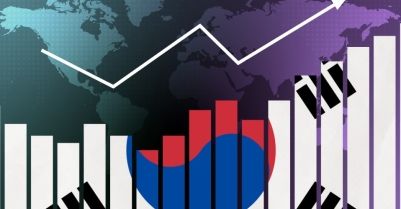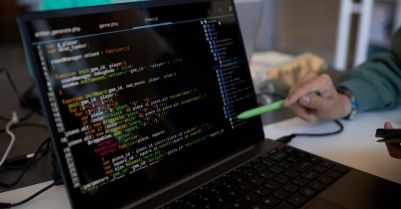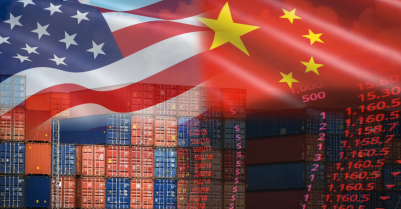-
View article
 #Economy
#EconomySouth Korea: a year after the political crisis, markets are buying the promise of stability
2025/12/17
- #Eco-trends
- 2020/01/07
- 0
-
6
World – Macroeconomic Scenario for 2020-2021: a delicate balance
A brief overview of the global economy reveals a scattered chorus of creaks rather than a cluster of indicators that are converging towards an impending abyss.

Although nothing currently suggests that growth rates are about to plunge, a jittery climate that remains hampered by crippling uncertainty and business investment that is declining to varying extents are contributing to a downturn.
Households are holding up well, helped by low inflation and favourable financial conditions, which should help to soften the impact of the cycle, under the watchful (and benevolent) eye of central banks.
Leading the sources of uncertainty is the trade war between the United States and China, although blindly escalating the issue may cease to be the name of the game before long. The phase-one agreement (the details of which are far from clear) should be signed in January, a fact that Donald Trump is likely to tout on the campaign trail. With this agreement, there is some hope that we will get a break from escalating tariffs, but we are still a way off from a US-China entente. There is nothing stopping tensions simply shifting to other delicate matters, including the reform of Chinese state-owned enterprises, subsidies, intellectual property, the situation in Hong Kong or the presidential election in Taiwan.
Elsewhere, Brexit should now (finally) happen on 31 January 2020. The UK wants to hammer out the details of its future partnership with the European Union (including a free trade agreement) by the end of 2020, but such an ambitious timetable for negotiations will create doubts over the quality of the future relationship. The risk of a ‘no-trade-deal Brexit’ will replace that of a ‘no-deal Brexit’.
So, uncertainty, political and geopolitical tensions may have eased in the short term, but are not expected to disappear permanently and will continue to negatively impact trends in business investment.
Business investment has held up well until now but a downturn is becoming apparent. Warranted by uncertainty over future demand, which is largely due to concerns over global trade, the downturn is strangely both premature and still contained. Premature in the sense that it has not occurred in the wake of a classic cyclical deterioration, and contained given that it is not yet widespread or severe. The Eurozone, which is very disjointed based on the extent of countries’ exposure to global trade and the manufacturing sector, provides a good example. After several years of low investment, companies are preparing to manage the slowdown without any surplus capacity (which is corroborated by the declining but still-high capacity utilisation rate) and are adopting a wait-and-see stance. They are not combating their eroding margins either by sharply reducing their capital expenditure or drastically cutting their workforce.
However, we should not count on corporate investment (or on global trade, which is more sensitive to growth in investment than growth in consumption) to underpin growth – that responsibility clearly falls to households.
The labour market is continuing to adjust at an uneven pace, and the decline in job creations has not yet translated into a significant increase in the unemployment rate. Moreover, consumption is expected to be boosted by a slight increase in wages and purchasing power gains in light of inflation that is still very moderate. Core inflation will remain low, while without a jump in demand for oil or an extension of the OPEC+ agreement that aims to curb production, oil prices could drop below USD60 as early as H220.
Although household consumption is providing some hope that growth will merely slow down rather than collapse, the jobs-wages-margins balance is delicate nonetheless. Against an uncertain backdrop, faced with a slowdown in productivity gains and eroding margins, will companies be able to weather a major adjustment in their costs for very long without triggering cuts to their workforce? If companies do not make this painful move in order to maintain growth, the equity markets could very well downgrade their earnings forecasts.
While the major central banks have undertaken strategic reviews of their respective policies, there is still powerful temptation to ease monetary policy.
The Federal Reserve is likely to give in to it in the end – our scenario still calls for one preventive cut limited to 25bp in 2020. The European Central Bank will not resist. We are forecasting no rate hikes, and perhaps even a 10bp drop in the deposit facility rate for 2020, with Quantitative Easing extended and the issue share limit increased from 33% to 50%, and forward guidance. The Bank of England will give in too. Only the Bank of Japan, which is already aware of the collateral damage of excess, will resist the temptation.
Once again, everything is leading towards core long rates remaining low: economic slowdowns are materialising, inflation is weak, monetary policy is accommodating and the environment is fraught with actual or potential risks. This will please ‘peripheral’ bond markets’ and equity markets’ risk premiums, on which depend the wealth effect and household consumption, an essential ingredient in a scenario where growth merely slows down, rather than collapses.
Catherine LEBOUGRE - catherine.lebougre@credit-agricole-sa.fr








